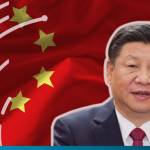Estimated reading time: 5 minutes
Listen to this podcast on Spotify, Apple Podcasts, Podbean, Podtail, ListenNotes, TuneIn
As businesses venture into new markets and strive to expand their global reach, the importance of robust risk mitigation and secure funding mechanisms cannot be overstated.
At the heart of these intricate trade transactions are export credit agencies (ECAs), playing a pivotal role in structured trade and export finance.
ECAs are the cornerstone for infrastructure development and economic growth, facilitating the flow of billions of dollars in transactions and empowering businesses to confidently navigate the risks of international markets.
In this episode of Trade Finance Talks, TFG’s Deepesh Patel was joined by Francesca Beomonte, Head of Structured Trade & Export Finance at UniCredit, to learn more about the role of ECAs in international trade.
The role and transformation of Export Credit Agencies
ECAs were originally government agencies dedicated to supporting export development by providing export financing and risk mitigation tools, thereby encouraging the growth of cross-border trade.
As Beomonte explained, “They are supporting the national economy to export abroad and they are providing support in different sectors.”
According to Beomonte, ECAs have traditionally supported large-scale infrastructure investments in emerging countries.
She said, “The range of investments they support is quite large, we are speaking about infrastructure development such as hospitals, water treatment facilities, and machinery.”
Intuitively, ECAs typically offer tenors with extended repayment terms, often lasting two to three years. “Construction delivery is generally not lower than two, three years and the repayment terms are quite long,” Beomonte added.
Moreover, she referenced the symbiotic relationship between private risk insurance (PRIs) and ECAs, saying, “The PRIs can be complementary in the sense that they can finance local cost or down payment.”
ECAs have transformed over time, expanding their involvement in various sectors.
Beomonte highlighted this transformation, saying, “In these last years, ECAs have taken a greater role because they are providing support in many different sectors.”
ECAs have moved beyond being perceived as lenders of last resort and have emerged as key drivers in multiple sectors, including energy transition initiatives.
As demonstrated during the COVID-19 pandemic, their profound impact on supporting local economies was remarkable
Minimising risks in challenging jurisdictions
ECAs are instrumental in supporting exporters by providing guarantees and risk mitigation solutions that enable trade diversification across different jurisdictions.
While primarily providing guarantees, some ECAs also offer direct funding facilities. However, it is often banks that handle the lending aspect.
For instance, banks like UniCredit, collaborating with ECAs, work towards providing solutions that promote exports and support borrowers in risky foreign markets.
As Beomonte noted, “ECAs are just providing insurance coverage guarantees, which means that there must be someone doing the lending, and these are exactly the banks.”
Moreover, Beomonte shared two notable examples of successfully executed projects in challenging jurisdictions: the Green Line railway project in Egypt and the metro project in Abidjan, both of which have garnered awards.
She further emphasised the socially responsible nature of such projects, stating, “The infrastructure system is important to support the mobility of people and to develop business, so it is a very important project.”
Beomonte also revealed UniCredit’s involvement in these projects and its commitment to supporting clients across various project sizes and sectors, mentioning, “We are speaking about large projects involving other banks, working on bilateral projects, small, medium-sized projects to support the entire range of our client’s needs.”
In addition to providing guarantees and financing, ECAs help exporters manage the risks associated with conducting business in challenging jurisdictions.
As Beomonte clarified, “Working in high-risk jurisdictions often requires extensive negotiations with sovereign counterparts, such as ministries of finance, which can be time-consuming.”
To address the risks associated with the performance and interruption of commercial contracts, such as buyer insolvency, default, or bankruptcy, exporters may utilise ECAs or PRIs.
“Companies can use either ECAs or private risk insurance to cover the performance risk, and the risk related to the fact that the contract can be interrupted,” she explained.
Modernising export finance rules and supporting sustainable projects
Collaboration between banks and ECAs plays a vital role in ensuring the success of long-term projects and managing capital utilisation.
Banks rely on ECA coverage to alleviate capital burdens, especially in projects with extended construction periods.
As Beomonte pointed out, “For banks, it’s super important to collaborate with ECAs considering that we are speaking about very long-term projects in terms of the construction of the underlying project.”
The modernisation of export credit rules under the OECD ‘Arrangement on Officially Supported Export Credits’ exemplifies the collaborative efforts of export finance stakeholders.
It aims to offer longer repayment terms for climate-friendly projects, aligning with the Climate Change Sector Understanding (CCSU).
Beomonte shed light on the key changes, stating, “There will be long repayments for goods and services consistent with the life of the goods or the investment as well as more flexibility in the financial structure of the transactions.”
With the new rules set to take effect on July 15th, exporters and financial institutions can expect greater flexibility in structuring transactions, while specific project infrastructure may vary.
For example, as Beomonte pointed out, “OECD has established that coal-fired power plants will not be eligible for ECA financing anymore.”
The longer repayment terms and financial structural flexibility will be applicable to a broader range of climate-friendly transactions, aligning with ESG targets and reinforcing the focus on supporting sustainable projects.
By implementing the updated framework, banks and ECAs will strengthen their collaborative capabilities, enabling exporters to effectively navigate the challenges of conducting business in volatile jurisdictions.
Furthermore, this framework will actively promote and facilitate sustainable projects, fostering the transition towards a greener economy.
Looking ahead: Future trends in export finance
Looking ahead, the evolution of export finance regulations, including those set by the OECD, will further shape the industry and its support for companies across the world.
Beomonte underscored the expanding scope of export finance, stating, “Export finance is enlarging its scope of work because traditionally export finance was supposed to support infrastructure investments and capital goods in risky jurisdictions.
But now we know that there are a lot of investments that are financed with export finance also in European countries.”
Referring to the growing trend in energy transition projects, for instance, wind farm investments, Beomonte said, “The most favoured way to finance this kind of investment is the export finance scheme. It can be corporate finance, project finance, or a structural transaction.”
This demonstrates how export finance is increasingly evolving to fund sustainable initiatives, creating a parallel trend within the industry.






































